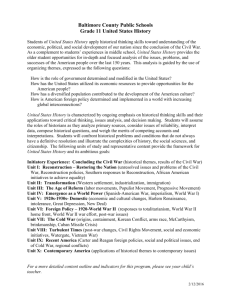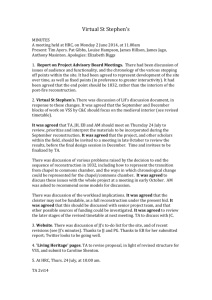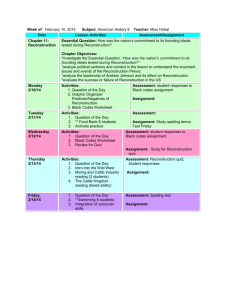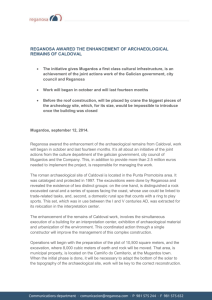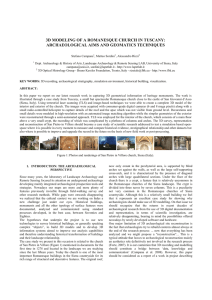Notes 2-6
advertisement
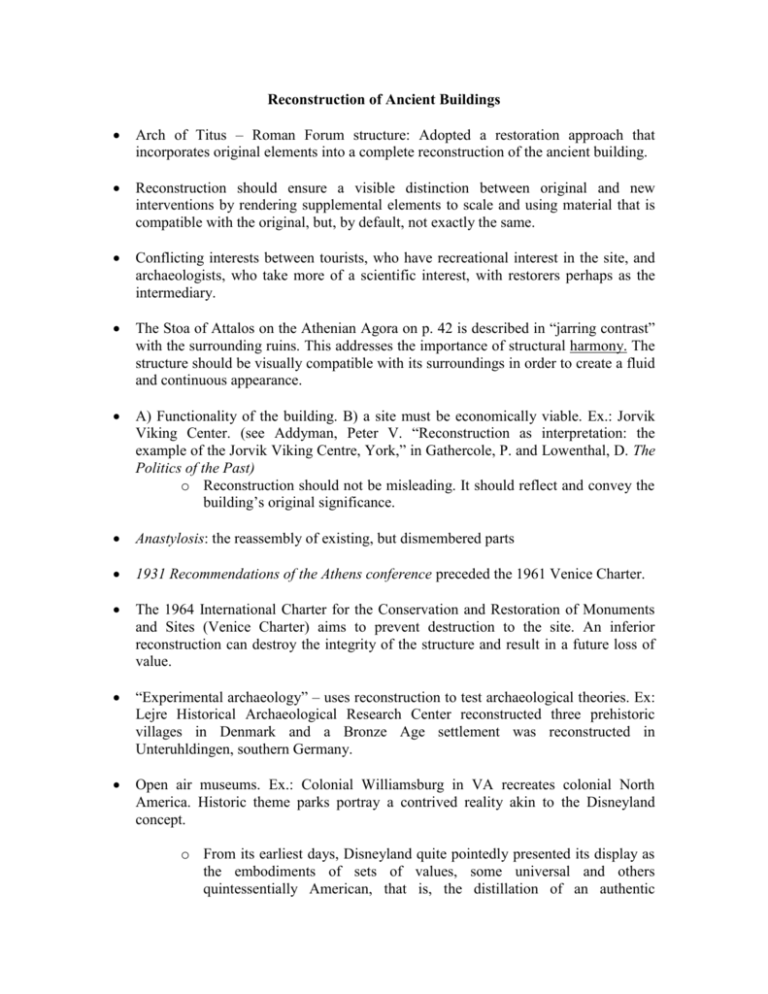
Reconstruction of Ancient Buildings Arch of Titus – Roman Forum structure: Adopted a restoration approach that incorporates original elements into a complete reconstruction of the ancient building. Reconstruction should ensure a visible distinction between original and new interventions by rendering supplemental elements to scale and using material that is compatible with the original, but, by default, not exactly the same. Conflicting interests between tourists, who have recreational interest in the site, and archaeologists, who take more of a scientific interest, with restorers perhaps as the intermediary. The Stoa of Attalos on the Athenian Agora on p. 42 is described in “jarring contrast” with the surrounding ruins. This addresses the importance of structural harmony. The structure should be visually compatible with its surroundings in order to create a fluid and continuous appearance. A) Functionality of the building. B) a site must be economically viable. Ex.: Jorvik Viking Center. (see Addyman, Peter V. “Reconstruction as interpretation: the example of the Jorvik Viking Centre, York,” in Gathercole, P. and Lowenthal, D. The Politics of the Past) o Reconstruction should not be misleading. It should reflect and convey the building’s original significance. Anastylosis: the reassembly of existing, but dismembered parts 1931 Recommendations of the Athens conference preceded the 1961 Venice Charter. The 1964 International Charter for the Conservation and Restoration of Monuments and Sites (Venice Charter) aims to prevent destruction to the site. An inferior reconstruction can destroy the integrity of the structure and result in a future loss of value. “Experimental archaeology” – uses reconstruction to test archaeological theories. Ex: Lejre Historical Archaeological Research Center reconstructed three prehistoric villages in Denmark and a Bronze Age settlement was reconstructed in Unteruhldingen, southern Germany. Open air museums. Ex.: Colonial Williamsburg in VA recreates colonial North America. Historic theme parks portray a contrived reality akin to the Disneyland concept. o From its earliest days, Disneyland quite pointedly presented its display as the embodiments of sets of values, some universal and others quintessentially American, that is, the distillation of an authentic American character and way of life. (Disney’s Epcot was originally intended as a living community – a place where American living was the very theme.) o Because entertainment is the primary value, open-air museums tend to emphasize story telling over the exhibition of historical materials. One criticism is that this article doesn’t address cultural values in the decision making process. If a site has changed over centuries, for ex., what period you go back to in undertaking a restoration is often subject to conflicting interests. The Presentation of Archaeological Sites The presentation of a site should aim to bring history to life by using the remaining archaeological evidence. It should make it “attractive, visually stimulating, and thought provoking while maintaining historical accuracy (?) and respecting the integrity of the ruins.” Tourism is a driving force for the development of a site. Must satisfy the public’s expectations. (Addresses travelers and assumes no local inhabitants.) Site evaluation, accuracy in the interpretation of historical evidence. Must not compromise the historical and aesthetic integrity of the site. Process of selection in terms of what information is used to convey the site to the public. (political and financial concerns are often considered over historical accuracy) o Process of interpretation, presentation will not be objective. Matters who’s interpreting. In addition, involves different stories. Holistic / integral whole – the optimal method of making a site hospitable and attractive is to begin by considering it in its entirety. Not only structural elements but the fabric of the region and landscape should be respected. Duration of stay – Presentation depends on size and magnitude of site as well as duration of travel. Visitor’s stay is usually relatively short. Site intervention should be minimal. Attention should focus on the remains, which are the principal actors, not the surrounding backdrop. Replicas, like a column or statue, can be used to guide the visitor’s imagination. Visual treatment to enhance the visitor’s understanding of the ruins. A visitor’s center effectively disseminates information about the site, but should not suffice for an actual visit. Well-designed and cleverly positioned interpretive panels on site can serve to convey information in a way that is unobtrusive, concise, aesthetically pleasing and uses clear language. Presentation techniques should be in direct dialogue with the site and can include the addition of sound or visual effects, as well as 3-D models using advanced technology including multimedia and graphics. They should also help to elucidate questions visitors might have about the site. o In the Archaeology and the Destruction of the Later Athenian Acropolis, the Goulandris Museum of Natural History and the Greek War Museum are introduced as examples that use highly imaginative models, dioramas and replicas to convey a story. “humans like to learn about their own kind rather than commune with mute stones.” Must be culturally sensitive to presenting human subjects as objects so as not to project the past onto people living in the present. Objects / replicas can suggest the original function or character of the spaces. Avoid turning the site into an exhibition hall. Use open spaces to engage visitors by providing a hands on learning experience can have additional public appeal as well as generate revenue. Guides are an important part of the visitor experience, particularly at sites that are not so attention grabbing on their own. Guides and other actors can also play a theatrical role when dressed in period clothing. Be creative and artistic without disrespecting the integrity of the site or compromising its long-term existence.



